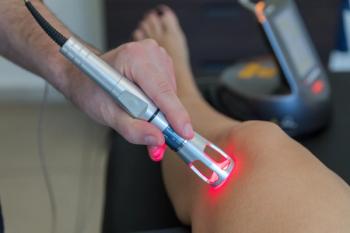
Understanding the Types of Cosmetic Laser Treatment
Ilanit Samuels, MCMS, Pa-C, provides an in-depth explanation of how cosmetic lasers work and how they play a role in cosmetic dermatology at the 2022 SDPA Conference.
At the 2022 Society of Dermatology Physician Assistants Conference in Miami, Florida, Ilanit Samuels, MCMS, Pa-C, and owner of Illy Aesthetics, gave a general overview of the different types of lasers used in dermatology in her session, "Cosmetic Lasers 101."
Samuels started with a general explanation of the light amplification by stimulated emission of radiation (lasers). Lasers emit one wavelength of light. There are 4 basic laser parameters to take into consideration before using one on a patient: Wavelength, pulse duration, spot size, and fluence.1
A wavelength is the distance between 2 peaks. A shorter wavelength results in a more superficial penetration a longer wavelength results in a deeper penetration. Pulse duration takes into consideration how quickly the energy is delivered to the tissues. Fluence, the energy of a laser pulse divided by the area it is illuminating, is measured in joules.
An important scale used by dermatologists, when deciding what kind of laser to use, is the Fitzpatrick Scale. It was developed based on an individual's skin color and their tendency to burn or tan when exposed to sunlight. There are 6 categories of the scale, from the lightest skin to the darkest skin. The use of the scale has proven to be a valuable diagnostic evaluation tool for laser treatments. As Samuels explained, "Skin type 1 has the least amount of melanin and therefore will keep up the least, so you're able to use higher energies versus higher skin types like 5, that you have to look at more carefully because there's going to be more uptake in that melanin of energy."
Samuels then described the different types of lasers and the conditions they can treat. Vascular (pulse-dye or KTP) treatments use electromagnetic waves to provide optimal results to patients. They're best used for treatments of skin conditions such as rosacea, psoriasis, cherry angiomas and to improve skin texture.
Quality-switched (Q-switched) lasers allow for the generation of nanosecond-range laser pulses. They are commonly used for pigmented lesions and tattoo removal. Samuels said that tattoo removal is a lengthy, painful process that can require up to as many as 20 treatments to achieve optimal results
Samuels noted the risks associated with using lasers in dermatology. She said erythema and edema should resolve within 1-2 days. Purpura should be clear within a week, and hypopigmentation or hyperpigmentation could last a few months. The best way to eliminate any complications is to keep the skin cool before and after any laser therapy.
Reference
- Samuels, Ilanit. Cosmetic lasers 101. Presented at the 2022 Society of Dermatology Physicians Assistants Conference; November 17-20, 2022. Miami, Florida.
Newsletter
Like what you’re reading? Subscribe to Dermatology Times for weekly updates on therapies, innovations, and real-world practice tips.
















